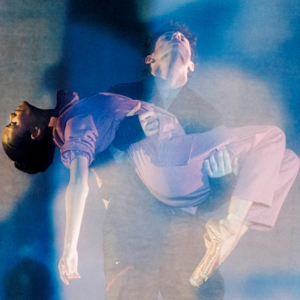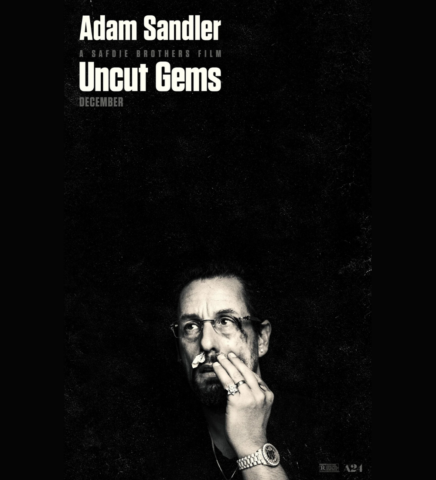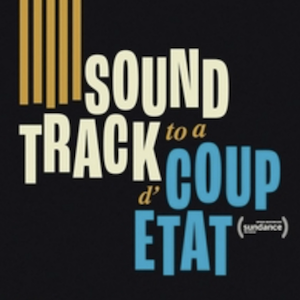Films that start out as Powerful Plays
By Alycia Roocroft
Have you ever found yourself wondering, ‘Where did that story idea come from’ when watching a film in your living room or at your local cinema? Finding out what inspired a film could add a whole new layer of depth to your understanding of it. Find out more in Films that start out as Powerful Plays
The theatre, has of course, always been a space where stories come to life, raw human emotions are displayed on stage in front of your eyes whilst immersed in the set and sound. Sitting and being part of the live-action creates a thrill of the unknown, no performance is ever the same, letting audiences see a unique performance that captivates. The very closeness to the action brings a special frisson to the performers as well as the audience.
Before film, there was theatre, with live performances having been part of human history for thousands of years. As we adapt, so has the theatre and due to the increasing popularity T.V, films and now streaming services housing thousands of films, the theatre has had to bring new practices into place.
Some theatres, like the National Theatre, now offer at-home video subscriptions which allow the ability to watch many popular and pre-recorded performances of some of the most powerful and emotive plays out there at the moment, from the comfort of your own home.
Films on the other hand have allowed us to convey bigger realities and bigger ranges, the camera lens gives the filmmaker unlimited power being able to delve deeper into fictional realms because the live audience isn’t present also partially because production studios are able to offer bigger budgets for films allowing for more expensive and digitally enhanced practical effects. It also allows for the director to really hone in on any angle of the story they wish the viewers to fully engage with.
Interesting isn’t it when films are made from a successful stage play? The results are potentially the best of both worlds, the coming together allows filmmakers to bring a new perspective into classic plays, adapting them for new generations while still honouring the original work.
But an added bonus is of course adaptations thrive not only in their creativity but also in their ability to make generations of stories resonate with new and different audiences.
William Shakespeare, one of the most renowned playwrights ever, stands as a towering figure in the world of play-to-film transformations, having a whopping 420 stage-to-screen films under his belt, quite a feat seeing as he has been dead since 1616, almost 300 years before the ability to record films was invented.
The first play ever to be made into a film was King John written by Shakespeare; interestingly, the film was released within the first decade of cinema, coming out in a staggeringly early in 1899. Although only one minute of the film still exists, it set a precedent in the film industry that stage-to-screen adaptations were and still are a core part of cinema.
Of course, Cinema was from its earliest days international and France cinema took theatre productions and turned them into films.
France has a long history with the dramatic arts and also has lots of stage-to-screen adaptations. The French play (Huit Femmes) 8 Females was originally written by Robert Thomas, and initially shown on stage in 1958.
Both play and film centre around a female ensemble after the family’s patriarch has been murdered.
Interestingly, the play’s been made into film three separate times since its first showing in 1958. The most popular of the adaptations made its way to cinemas globally in 2002, directed by François Ozon. (above)
The importance of being Earnest debuted on stage in 1895 and was a part of English playwright Oscar Wilde’s drawing room plays.
The play has also been adapted into at least three different English language films, with the most recent one being in 2002. The play was also adapted two other times before the 2000s, once in 1952 and again in 1992. This 2002 version was directed by Oliver Parker who has directed many other Oscar Wilde film adaptations.
The play and film Alfie, which was made initially in 1963 by playwright Bill Naughton, has been adapted for screen twice in the past, once in 1966 and again in 2004.
The film follows a young ‘man about town’ Alfie, who is self-centred and lives only for his own enjoyment. It explores how he navigates new-found loneliness and responsibility after his own misbehaviour.
With its daring fourth wall breaks, (when film actors look and talk directly to the camera in essence talking to the audience) happening when Alfie acknowledges that the audience is not there in the film. The 1966 film remains one of the most beloved and innovative examples of the play-to-film genre. It was also the film that truly broke Michael Caine into international stardom.
The Seagull, By Russian playwright and short-story writer Chekhov’s (1860-1904) beloved exploration of human emotion, has had its fair share of time on the big screen.
Being adapted five times in various languages. Its 2018 film version, directed by Michael Mayer, adds to the legacy of a work that continues to be seen on stages across the globe. The play and films alike follow the story of a group living in rural Russia and their struggles and disappointments as artists.
The Seagull is having a run at the Barbican theatre from Wednesday 26th February to Saturday 5th April: Starring Cate Blanchett and Tom Burke, adapted by Duncan Macmillan & Thomas Ostermeier, and directed by Thomas Ostermeier. Running for six weeks only
Japan also has a rich tradition of theatrical masterpieces, with the country having many different types of traditional theatre. The Love Suicides at Amijima whilst being one of the lesser-known plays to film adaptations on this list, its history is impressive.
The play, originally written in 1721 by Chikamatsu Monzaemon, was intended for bunraku puppet theatre (a form of traditional Japanese puppet theatre) but later adapted into another form of Japanese theatre, kabuki. Masahiro Shinoda, a Japanese new wave director, adapted the play into a film in 1969 called double suicide.
The Post Office, written in 1912 by Rabindranath Tagore, achieved international recognition. The play has productions running in Germany, France, Poland, and Spain, as well as India.
The play’s first English production was produced by W.B Yeats giving the play a wider outreach to the English-speaking world. The film adaptation, directed by Zul Vellani in 1965, continued to spread the plays message about hope.
Mike Leigh brought Abigail’s party to the TV screen in 1977, the play was originally made for stage and tv centred around the new middle-class consciousness of the late 1970s.
The made-for-TV film was intentionally designed to look like a stage production, with the whole play/film taking place in one room, which explains the closed-off set design. It was screened on the BBC as a ‘Play’ made for TV.
The stage-like set design is deliberate to mirror the tension and claustrophobia of the story, offering a commentary on the newly emerging middle class in 1970s Britain.
A Taste of Honey initially brought to the stage by Shelagh Delaney, focused on telling a story about poverty and societal tensions. The play premiered in 1958 and was adapted into film not long after.
In 1961, A Taste of Honey’s film adaptation was directed by Tony Richardson and was one of the key films of the kitchen sink (a style of social realism) movement in 1960s British cinema.
Sometimes the play and the film may not be the same but more influenced one by the other. Take some of the Shakespeare films, like Romeo and Juliet (1996) or Macbeth (1971) are modern takes but do follow the original stories whereas the film 10 Things I Hate About You, reimagines The Taming of the Shrew as a high school drama comedy.
It’s a perfect example of how classical theatrical stories can be well translated into more modern-day stories, allowing the themes to be shown universally.
The film brings a more modern narrative to the story, set in an American high school setting, but still sticking to the outlines laid down by the plot in the original play.
The Kitchen, by Arnold Wesker, is another influential play which made its stage debut in 1957, the play was Wesker’s first and most performed play which made way for the two film adaptations the play has introduced.
The first adaptation of the play premiered in 1961 and followed the plot around immigration and gender dynamics. The most recent version of The Kitchen, La Cocina, was directed by Alonso Ruizpalacios. The recent film shares common themes around immigration and social dynamics. However, this version shifts the focus to Latin American immigrants. Each adaptation makes sure to show human relationships at the core of its story.
La Cocina hit cinemas globally in December, following waitress Julia and chef Pedro as they navigate their bustling kitchen whilst also gripping onto their unravelling relationship.
Directed by Alonso Ruizpalacios, the film loosely based, similar to 10 things I hate about you, on Arnold Wesker’s famous play, tackles immigration and societal pressures whilst paying honour to its source material.
Whilst having to keep some aspects of the original plays to make a foolproof adaptation, pushing already written stories to the big screen lets filmmakers get creative with their story’s boundaries and has made for some of the most successful films of all time.
Stage-to-screen adaptations can fit into a diverse variety of genres, themes, and narrative acts, and with the ever-expanding cinema industry, big-budget productions let traditional and non-linear stories be told in a different way to the stage. Unmistakeably, the theatre holds lots of magic when it comes to telling stories and connecting with the audience. Whilst both types of media are good in their own right, when working together they can create something really powerful.
if you enjoyed reading Films that start out as Powerful Plays why not try Did You Know? ‘Unfilmable’ Books Become Cult Classic Films
.Cent London, Be inspired; Get involved













